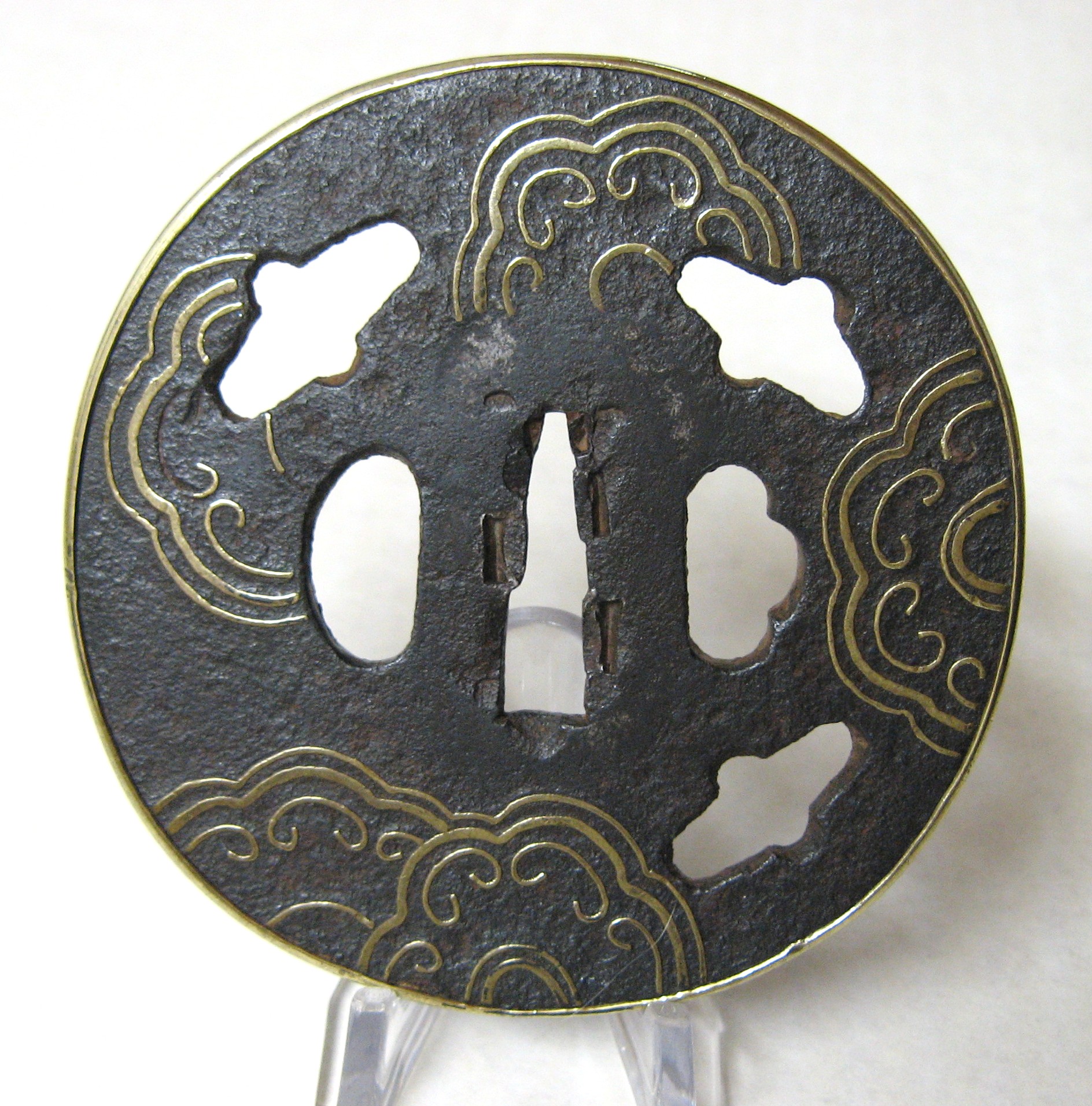|
|
|
|
|
Period: |
Late Muromachi period to early Edo period. |
|
Basic Shape: |
Mostly round, oval, mokko, or kiku-gata. |
|
Seppa-dai: |
Similar to Heianjo-zogan style. |
|
Hitsu-ana: |
Elegant, elongated ellipse, similar in shape to that used by the Kyo-sukashi school. |
|
Thickness: |
From 3.0mm to 4.5mm. or the thick center tapers to the edge. |
|
Rims: |
Round. |
|
Design Characteristics: |
Flat brass inlay of floral designs with large openwork circular inlays of mon or flowers, several in number spaced evenly around the web. It is common to find a shallow line cut where the brass inlay meets the plate. The openwork mons and flower subjects in Koike work will generally be more delicate than other schools who use this type of inlay. |
|
Metal Surface: |
Iron, generally of the same hardness as Heianjo-zogan work, usually of good quality. Some have iron with a fine silky polished surface. |
|
Comments: |
Although the iron quality is good in the Yoshiro work, the most admirable quality is the fine brass inlay. The contrast of the color of the iron with that of the brass is very fine in the Yoshiro work. This is not to be found in other brass inlay. |
 |
Very fine KAGA inlay Tsuba.
Early Edo period (ca. 1650) Follows the style of Yoshiro tsuba. Brass (Shinchu) Fukurin and hirazogan in the Kaga style. 8.1cm X 8.2cm X .5cm thick. |
Return to Tsuba Artisan School Page
Study Guide | Tsuba | Haynes
Tutorial